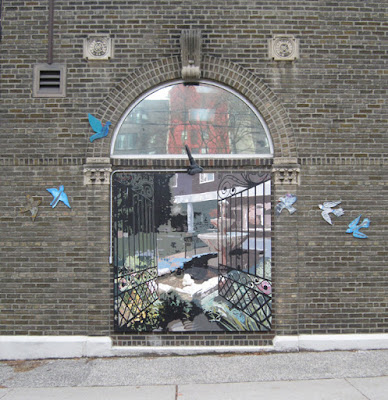Location: 1 Adelaide Street East
Date photo taken: 7 February 2018
I spend a lot of time thinking about how people use doors. Strange but true. Two behaviours fascinate me: over-use of disabled assist buttons and avoidance of revolving doors. The pandemic has changed my attitude toward the first, but revolving doors are a good Environment Day subject. Originally designed in the 1880s to prevent the "entrance of wind, snow, rain or dust" they are now recognized for their ability to curb unwanted air flow (think cold air blasting you when you walk by a store's open door in the summer). This can result in significant energy savings, but only if people use them. Sit and watch the entrance to a building with revolving doors however and you'll notice that a lot of people avoid using them if they have another option. Oxford Properties is one company trying to change that. They have decorated the revolving doors in several of their downtown locations with green leaf patterns and included wording about energy efficiency in an effort to win users over.
NeaTO: Students at MIT were curious enough about the phenomenon of revolving door avoidance to author a study on the subject. When they polled people about their door choices, attitudes toward revolving doors boiled down to fear, loathing and laziness: fear of getting trapped, either entirely or just an arm, leg or bag; distaste at potentially having to share the space with a stranger or have them dictate the speed of rotation; and complaints about the effort required to push the door.



